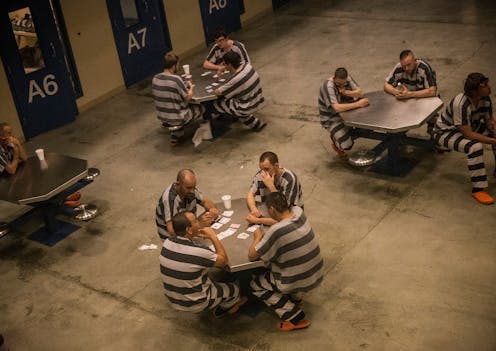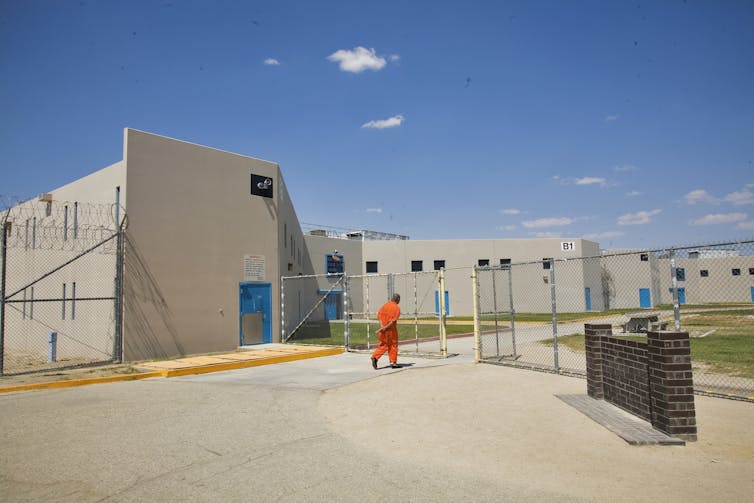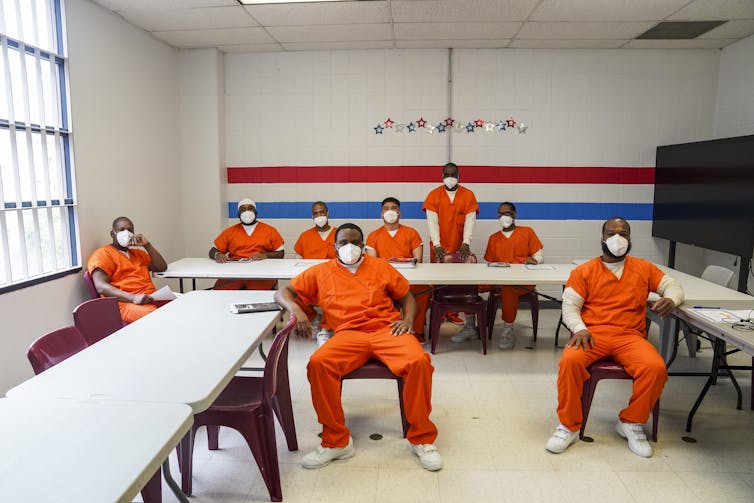Understanding mass incarceration in the US is the first step to reducing a swollen prison population
Experts still disagree about why the US prison population has grown so much over the last few decades. But crime is only one part of the problem.

The incarceration rate in the United States fell in 2021 to its lowest levels since 1995 – but the U.S. continues to imprison a higher percentage of its population than almost every other country.
The U.S. incarcerates 530 people for every 100,000 in its population, making it one of the world’s biggest jailers – just below El Salvador, Rwanda and Turkmenistan.
The U.S. actually had the greatest percentage of its population imprisoned until 2019. This followed steady growth in prison and jail populations in the 1970s, after a wave of “tough on crime” laws and policies swept the nation.
While there has been a growing recognition of the need to reduce mass incarceration, experts do not agree on what caused the ballooning prison population or the best path to reducing it.
As a former prosecutor and a researcher who studies the criminal justice system, I have found that understanding how the U.S. incarceration rate grew over the last few decades is the key to understanding its root causes – and what it will take to return to lower rates.
As I show in my new book, “Mass Incarceration Nation, How the United States Became Addicted to Prisons and Jails and How It Can Recover,” people tend to talk past one another when they discuss crime and punishment in the U.S. I think the public debate can improve if people develop a better understanding of how mass incarceration arose – and its tenuous connection to crime.

A growing prison population
The growth in mass incarceration began with a crime spike. Homicides, which averaged around 5,000 per year in the 1960s, shot up in the 1970s, reaching over 24,000 in 1991.
The crime spike sparked a bipartisan wave of punitive laws, the hiring of thousands of police officers and a “tough on crime” mindset that permeated every aspect of American criminal law. The system became more punitive, generating longer sentences, especially for repeat and violent offenses, as I show in my book.
Over time, this led to today’s aging prison population and many people being held long past the time they would have been released in other countries and at other times in this country’s history.
The number of people 55 or older in state and federal prisons increased 280% from 1999 to 2016, according to Pew research.

Different kinds of crime
But longer sentences are only one factor in America’s supersized incarceration rates.
There has also been a dramatic expansion of the kinds of crimes for which U.S. courts imprison people.
After the 1970s, more and more people went to prison for drug crimes and other offenses that rarely used to lead to prison time.
Serious violent crime, meanwhile, went back down in the 1990s. The crimes – like armed robbery and murder – that had sparked the march toward mass incarceration plummeted.
But prison populations didn’t drop.
As a prosecutor in Washington, D.C. in the early 2000s, I saw this change firsthand. Our caseloads were increasingly dominated by drug sales, drug possession and gun possession cases – cases which, not coincidentally, are typically the easiest to detect and prove. These changes were happening on a national level.
The number of people incarcerated in state prisons for homicide increased by over 300% between 1980 and 2010, reflecting the temporary spike in homicides and longer sentences for those convicted of that offense.
But the scale of the increases for other offenses, like drug crimes, is even larger – rising 1,147% over this time frame.
Speaking the same language
While prison populations are finally starting to go down, progress is slow. At the current rate, it will take decades to reach the low incarceration rates the U.S. had for most of its history.
This dip is partially because of the COVID-19 pandemic, which prompted some states to release prisoners to avoid overcrowding and health risks. It is not clear that these recent reductions in the incarcerated population will continue.
I think that substantially reducing prison and jail populations will require better understanding of the link between incarceration and crime. It is not simply the case that incarceration goes up because people commit crime; instead, the story is much more complicated. That is because we use incarceration for two purposes: to obtain justice on behalf of victims and to try to change people’s behavior.
This distinction results in two kinds of cases flowing into this nation’s criminal courts.
First, there are cases that involve the most serious harm to individuals, like crimes of sexual violence and murder. Second, there are cases like drug offenses and weapons possession, which are not typically about obtaining justice for victims but are supposed to further policy goals like preventing drug use.
Changes in how we treat both kinds of cases contributed to the nation’s sky-high incarceration rate. American mass incarceration is a result of increasing sentence lengths for people who commit serious violent crimes. But it is also a product of a stunning expansion of the system’s reach in the form of more and more crimes leading to prison and jail.
Substantial progress at reducing the incarcerated population will require reversing both trends. First, returning sentence lengths for all offenses, including serious violent crime, to their historical norms. And second, resisting this country’s growing habit of relying on incarceration as a tool for achieving policy goals.
Jeffrey Bellin does not work for, consult, own shares in or receive funding from any company or organization that would benefit from this article, and has disclosed no relevant affiliations beyond their academic appointment.
Read These Next
As DOJ begins to release Epstein files, his many victims deserve more attention than the powerful me
Powerful men connected to Jeffrey Epstein are named, dissected and speculated about. The survivors,…
People are getting their news from AI – and it’s altering their views
Even when information is factually accurate, how it’s presented can introduce subtle biases. As large…
Medieval peasants probably enjoyed their holiday festivities more than you do
The Middle Ages weren’t as dreary and desperate as you’d think, and peasants often had weeks of…





